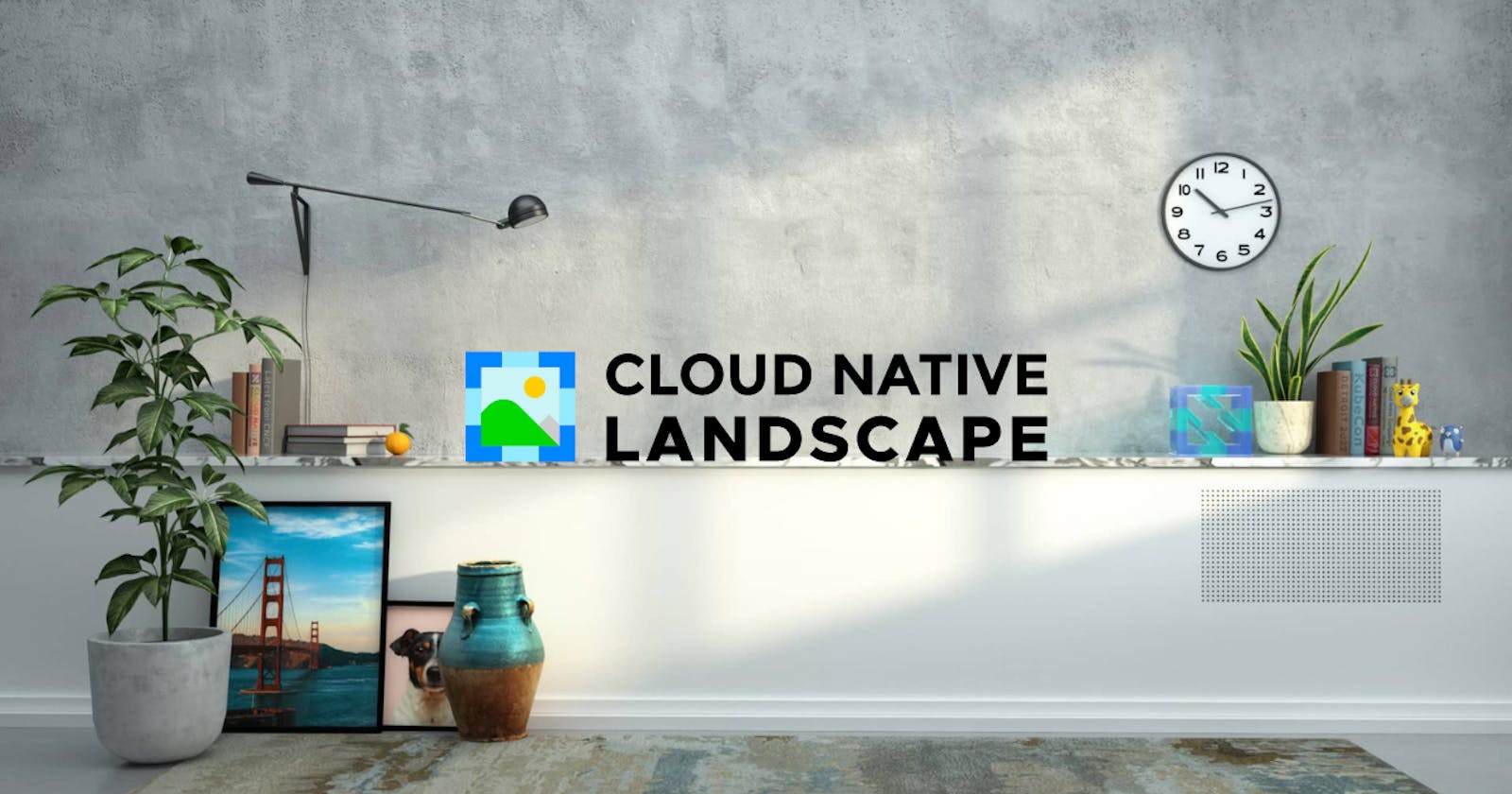Navigating the Cloud Native Landscape: Your Guide to Cloud-Native Projects and Tools
Introduction:
In the changing world of cloud computing, where innovation is constantly happening and technology advancements are happening quickly navigating through the realm of cloud-native projects and tools can feel overwhelming. Whether you're a developer searching for the technologies, for your applications a DevOps team aiming to streamline your deployment processes or an organization looking to embrace the possibilities of cloud-native computing it's crucial to understand the Cloud Native Landscape. In this blog post, we will take a journey through the landscape of native projects – from experimental sandbox initiatives to robust and reliable ones. We will explore the elements of native applications delve into the realm of CI/CD pipelines and unravel the complexities surrounding container orchestration, observability, security and more. Join us as we map out points and pathways in the Cloud Native Landscape – helping you make decisions and harnessing the potential power of cloud-native computing, for your projects and endeavors.
Story :
Let's start with the story. Imagine this world is like a huge group run by God. Inside this group, there are many countries, and each country has its job to do. Some countries are very advanced, some are still growing, and some are not advanced at all. These are the different types of countries in this big group.
The advanced countries have their areas called states and cities, which are a part of that country.
Connecting the story to CNCF Landscape:

Now, think of the Cloud Native Computing Foundation (CNCF) as the boss of all things related to cloud technology. Inside CNCF, there are three main groups of projects: Sandbox, Incubating, and Graduated.
These projects are like the country in the world. Each project has its unique personality and story. They help CNCF grow and get better, just like countries help their states in the country.
These cloud projects do different things like Containerization, CI/CD, Orchestration and application Definition, Observability and analysis, Service Proxy, Discovery and Mesh, Networking, Policy and Security, Distributed Database and storage, Streaming and messaging, Container Registry and runtime, and Software Distribution. Together, they make the world of cloud technology better in CNCF.
What is a cloud-native landscape?
The concept of the Cloud Native Landscape refers to a representation or map that showcases the technologies, projects and tools commonly used in the realm of cloud native computing. It provides an overview of the range of software and services that support practices, for developing and deploying applications in cloud environments.
Typically the Cloud Native Landscape includes categories such as container orchestration (like Kubernetes) container runtimes (such as Docker) tools for integration and continuous deployment (CI/CD) service mesh technologies, monitoring and observability solutions serverless platforms and more. It encompasses both open source projects, commercial products and initiatives driven by communities.
The purpose of the Cloud Native Landscape is to assist developers, DevOps teams and organizations in navigating the world of native technologies. It helps them make decisions about which tools and technologies are most suitable for their specific needs. Organizations, like the Cloud Native Computing Foundation (CNCF) often. Update this landscape to reflect how the native ecosystem evolves.
What are the different types of cloud-native projects?
1) SandBox:
Sandbox projects serve as the starting point, for projects to join the CNCF. These projects are usually in their development stages. Seek guidance and support from the CNCF community.
Key Points: Sandbox projects are often experimental. May not have a release at this point. They welcome contributions and collaboration from the community although they may not have a user base. Projects, in this stage, are encouraged to adhere to CNCFs principles and best practices.
2) Incubating:
Incubating projects have completed the Sandbox phase. Are now progressing towards maturity. These projects have shown signs of growth and engagement, from the community.
Key Points: Incubating projects are more developed compared to Sandbox projects and usually have updates/releases. They boast an expanding user base and a vibrant community of contributors. Projects, at this stage, are expected to follow CNCF guidelines and undergo evaluations.
3) Graduated:
Graduated projects are the reliable ones, within the CNCF ecosystem. They have shown their long-term viability, widespread adoption and dedication, to principles.
Key Points: Graduated projects are firmly established with a release schedule and a large community of users and contributors. They have demonstrated their capability to uphold standards of quality and security. Projects at this stage exhibit a commitment to open governance and embrace the core values of the CNCF.
Navigating the CNCF Trail map for all the projects
Containerization:
The Building Blocks of Cloud Native Applications Cloud applications are developed using containers which are lightweight and portable units that encapsulate an application, along with its dependencies. Containers offer flexibility to applications between on-premises and cloud environments with minimal adjustments. Docker, a used containerization platform has made container technology accessible to both developers and operators.
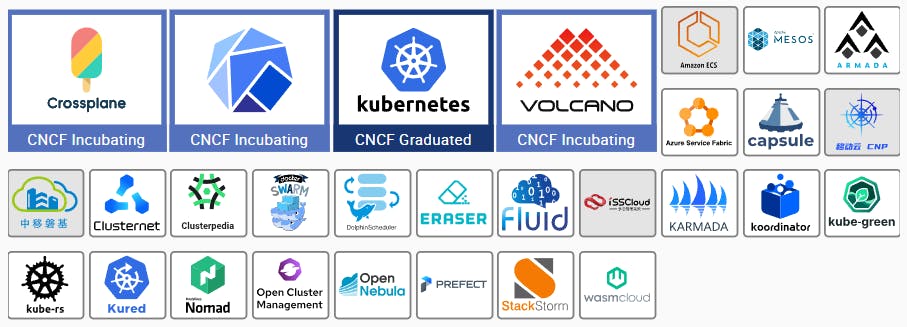
CI/CD:
Automating the Lifecycle of Container Images Container images have become the building blocks in the world of native computing. Continuous Integration/Continuous Deployment (CI/CD) pipelines enable automated testing, deployment and rollback of containerized applications. Whether you prefer building custom CI/CD scripts or leveraging solutions like Git or Jenkins the objective is to integrate these processes into your software development lifecycle.
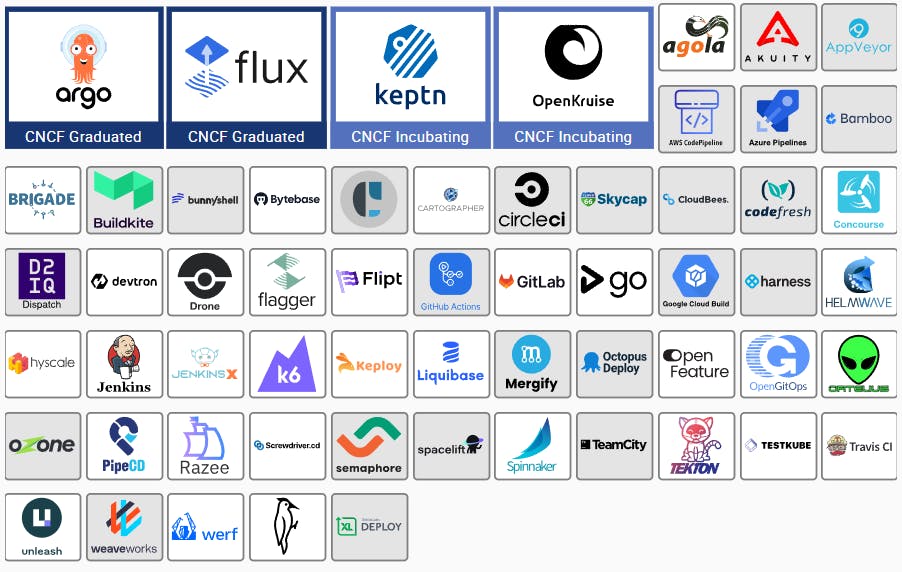
Orchestration & Application Definition:
Scaling and Managing Containers As your containerized applications grow in size and complexity managing them efficiently becomes a challenge. Orchestration systems such as Kubernetes provide solutions for automating container deployment scaling operations and resource management. While Kubernetes offers an ecosystem for this purpose alternatives like Docker Swarm and HashiCorp Nomad offer options for beginners.

Observability & Analysis:
Gaining Insights into Your Environment Maintaining a native environment requires observability. It is crucial to gain insights into aspects such, as performance monitoring, logging and debugging. By implementing observability practices you can proactively address issues within your native setup. Tools, like Prometheus Fluentd and Jaeger are commonly used for monitoring, logging and tracing in applications. They provide information, on the health of your application track events and help optimize performance. It's important to invest in observability to effectively diagnose and resolve any issues that may arise.

Service Proxy, Discovery and Mesh:
When it comes to microservices communication can get complex. But don't worry there are ways to simplify it. Service meshes like Istio provide an approach to monitoring and controlling traffic between microservices. However, it's essential to weigh the benefits against the added abstraction layer and consider solutions based on your needs.

Networking, Policy and Security:
To ensure the security of your native environment, software-defined networking (SDN) and network policies play a crucial role. They enable network management while enhancing security. It's important to select the appropriate Container Network Interface (CNI) plugin for long-term security and enterprise readiness when implementing micro-segmentation.

Distributed Database & Storage:
When modernizing workloads having scalable distributed databases is key. The Container Storage Interface (CSI) standard allows for the integration of storage solutions from cloud providers to third-party appliances.

Streaming & Messaging:
Efficient communication between microservices is crucial for performance. gRPC, a high-performance RPC framework, and NATS, an open-source messaging system, offer faster and more reliable alternatives to JSON-REST for communication in microservices architectures.
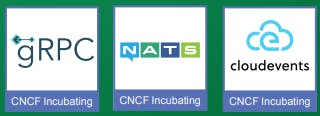
Container Registry & Runtime:
Storing, Signing, and Scanning Container Images Container images must be stored securely and scanned for vulnerabilities. Explore alternatives to Docker Hub, such as Harbor, and consider different container runtimes like containers and cri-o based on your specific requirements and needs.
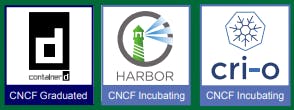
Software Distribution:
Securing the Supply Chain Securing the entire container image supply chain is paramount. Tools like Notary, based on The Update Framework (TUF), allow publishers to sign content, ensuring the integrity and origin of container images.

Conclusion :
In conclusion, exploring the Cloud Native Landscape is, like stepping into a world of innovation and technology. Just as different countries play their roles in our story the CNCF projects, ranging from Sandbox to Graduated make their valuable contributions to the constantly evolving cloud native ecosystem. These projects enable developers, DevOps teams and organizations to leverage containerization, CI/CD pipeline orchestration, observability, security measures and more. By gaining an understanding of this landscape and selecting the tools we can confidently embark on our journey toward building robust, scalable and efficient cloud-native applications. In this changing realm the Cloud Native Landscape acts as our guiding compass toward achieving success, in the world of native computing. So, follow us for more updates and insights on harnessing the immense potential of cloud-native.

